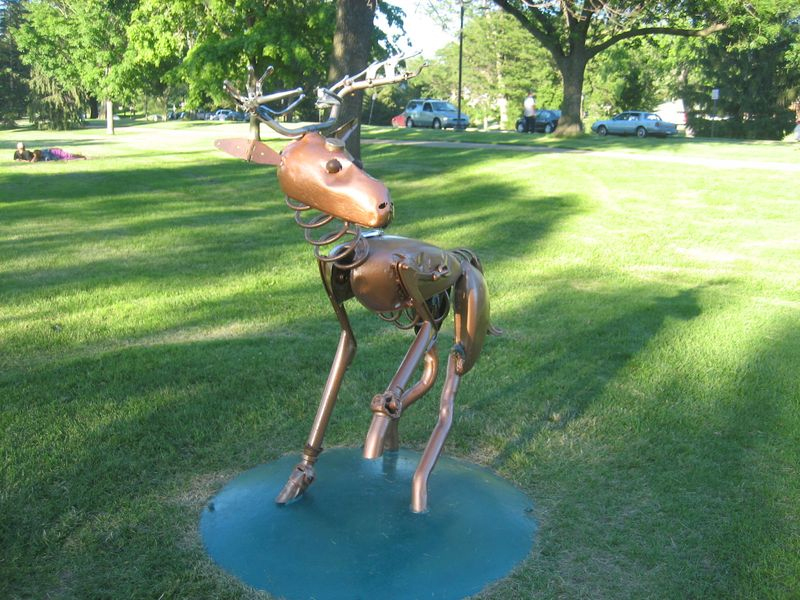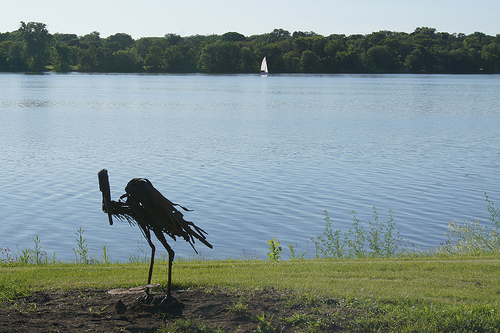
“We make art to see better.” — Albert BelleveauSadly, vandals stole the head off the deer in September 2010. Belleveau was rather philosophical about the incident. “Somebody liked it so much that they decided to take it home as a souvenir,” he remarked.

Another piece by Judd Nelson of Wayzata, MN, “Blue Heron with Pumpkin Seed,” was constructed using recycled metal and rebar. He also created “Snappy,” a sculpture depicting a turtle. “Snappy” was made from salvaged metals. The shell is made from a dome off a propane tank. The body is made from rebar and old plate steel.
Nelson explains that his sculptures focus on American wildlife, especially “the fauna of the North Central region.” “The sculptures are made from salvaged and reclaimed steel, making them environmentally friendly,” he says. “The durability of steel lends itself to the natural landscape and will require minimal maintenance.” Creative minds can find beauty in most anything, and there really is no end to what kind of art can be created with one of the most cost-effective mediums available: trash.